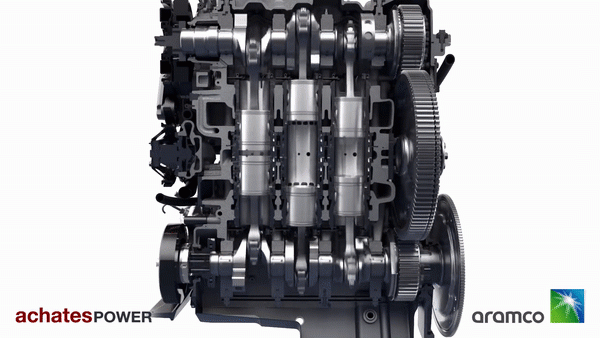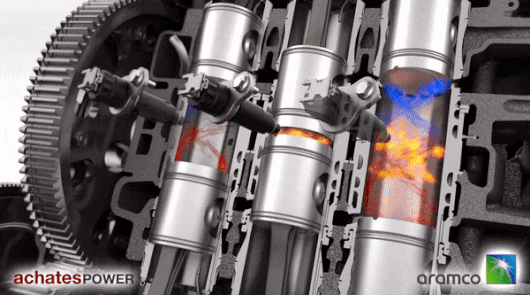The principle of operation of the engine with a counter movement of the pistons
Unique engines with pistons opposite each other: Video

The engines are located opposite each other horizontally laying the pistons have two common names in the world. We call them boxer engines. The English manners their name sounds like “boxer engine”, as the movement with their opposite cylinders reminiscent of a Boxing punch. But really, not that the Americans gave the engine the “boxer” title. So, if anybody was worthy to wear this title is the hero of our today’s article, in which the pistons actually fly to meet each other in a large common set of the cylinder. It’s powertrains with a counter movement of the pistons (RAP engine with oppositely moving pistons) or as they are called: the opposite-piston engines. Their work is truly mesmerizing:

These power units has a history stretching over 117 years (steam counterparts with similar design concept was seen at the end of 1800-ies). The most striking thing is that from the first instance of gasoline engine of similar design in France (the concept and a working prototype was developed by Gobron-Brillie), to the latest developments by 2015, the company “Achates Power” dealing with the problem of introduction opposed-piston engines, this type of engine has been continuously improved and many times came into the view of civil (rarely) and military producers (often developing for the military continue to this day). But the real popularity of the unique piston internal combustion engine has not achieved.
I wonder what great contribution to such an unusual design of the internal combustion engine was made by the engineer of Kolomna plant, Raymond A. Koreyvo, who built the world’s first diesel prototype of such an engine. The model was so successful that the German company Junkers are unable to resist the temptation to adopt the design. Didn’t stop the Germans even patent, shrewdly obtained by a Russian engineer in France. Patent law in those days in the future, the EU wasn’t working very well.
Next, and in parallel, the engine design has evolved in the United States, England, Germany. Later, work on the modernization and application of motors for military vehicles, including planes, ships and tanks was conducted in the USSR.
In its constructive essence, the internal combustion engine with moving towards each other piston, this two-stroke engine without a cylinder head which has two separate crankshaft, which two pairs of pistons are connected with pistons working in one cylinder.
Pistons are found (the gap when the work becomes so minimal that they literally touch each other) in the center of the cylinder. There are top dead center (TDC) of both pistons. Fuel-air mixture is fed through the holes on the sides of the cylinder. Through them, produced otrabatyvaetsya gases push the piston movement.
Here, a simplified scheme of this type of DVS:
Because these engines are two stroke, they have rarely been used in the automotive industry because they do not meet basic environmental tolerances and fit only for a cheap car lower class in the past. They smoked a lot, hysterically growled, but went mediocre.
By cons can also be attributed to increased fuel consumption and the complexity of the design with two cranks a double piston system. This made the design of yesteryear unreasonably expensive and difficult to manufacture compared to small two stroke engines.
However, with modern materials and the debugging experience more than a century of design have a similar piston engine, there are undeniable benefits. Thus, the prototypes of diesel engines with vertical cylinders from the company Achates Power have an extremely high degree of thermal efficiency from 40 to 50%, mainly due to the smaller area of the cylinder walls. Provided that the ordinary four-stroke diesel engine has only 35% efficiency, + 5 or even 15% is significant.
Plus, the design is simplified and facilitated due to the absence of cylinder heads, rocker arms, camshaft, valves, valve springs, etc.
The motor is also the best ratio of the inner diameter of the cylinder to the piston stroke that allows you to make the maximum amount of useful work. Mixing and ignition of the mixture here is faster.
Achates Power is currently developing engines for military vehicles, but they have released videos that show that mass production of diesel engines can also be in the offing:
At the 2.7-litre diesel engine 270 HP (!) and 650 Nm of torque.
In General, I wonder how modern engineers solve longstanding problem in the concept which stood at the origins of the French and Russian inventors, and how two-stroke engines can be used on civilian vehicles, on the condition that environmental standards are constantly being tightened, and ecology of the ice was never on top.
